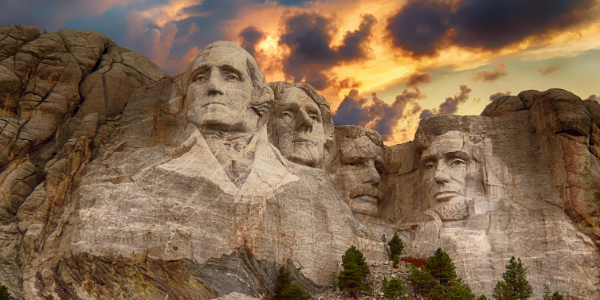
The Difference Between Conservatives and Republicans
Conservatives or Republicans? The Art of Redefining Oneself Without Disappearing
To many people, the words “Conservative” and “Republican” seem interchangeable. While they often overlap, they are distinct in both ideology and political practice. In this article, we explore what defines conservatism, how it influences Republican politics, and how these principles have shaped American leadership through history.
Conservatism – A Brief Explanation

Let’s start by defining the principle by which both Conservatives and Republicans are ostensibly unified: conservatism itself. Conservatism is defined as a political movement or ideal dedicated to preserving traditional cultural institutions and laws that largely or entirely work.
Social Conservatism

Social conservatism is largely focused on upholding the social institutions of a culture. U.S. social conservatives prioritize keeping social norms intact, including:
- Traditional Marriage
- Strong Immigration Policies
- Traditional Rites & Cultural Landmarks
- Religious Values
Fiscal Conservatism

Meanwhile, Fiscal Conservatism focuses on economic policies, favoring minimal government intervention in the market. Fiscal conservatives typically support:
- Lower Taxes
- Fewer Business Regulations
- Less Government Oversight
- Reduced Welfare Programs
While social and fiscal conservatism shape ideological beliefs, political parties serve as vehicles for implementing these ideas in government. One of the primary parties associated with conservatism in the U.S. is the Republican Party.
The distinction between conservatism and Republicanism isn’t just theoretical—it plays out in real-world governance. A prime example is President Trump’s first 24 hours back in office in 2025, where his decisive actions reflected key conservative and nationalist principles in practice. To see how these ideologies translate into leadership, read Trump’s First 24 Hours as President 2025: What Happened and Why It Matters?
These principles often find their political home in the Republican Party—but that relationship is more complex than it seems.
The Republican Party

The Republican Party is not the same as conservatism, though it often aligns with conservative ideals. Originating before the Civil War, it was historically known as the party of Lincoln. While many Republicans are conservative, party positions can shift with the times.
Conservatism has taken many forms throughout American history, shaped by the leaders who championed its principles. From Ronald Reagan’s economic reforms to Theodore Roosevelt’s emphasis on national strength, conservative values have evolved with each administration. If you’re interested in seeing how past presidents upheld conservatism in their leadership, read The Best Conservative Presidents in American History.
For decades, being a Republican in the United States was more or less like ordering an Americano: predictable, recognizable, and without too much ideological froth. But times change, and what was once a party with a clear conservative compass now seems to drift through populist storms, oversized-flag nationalism, and speeches that swing between Sunday sermon and reality show rally.
Trumpism—that cocktail of Reagan-era nostalgia shaken with Twitter fury—has remapped the GOP’s DNA. It’s no longer enough to defend low taxes and strong borders. Today, the applause meter also measures how many internal enemies you identify per minute. So, what does it really mean to be a Republican in 2025? It’s not a trivial question. It's like asking whether a feathered dinosaur is still a dinosaur—or just a confused chicken. The answer, of course, depends on which fossil you’re willing to vote for.
Classical Conservatism: Reagan and Other Prophets of Order
Before the party began to speak with a populist accent, there were Republican presidents who embodied a near-liturgical conservatism: shrinking the state, defending the free market, and upholding traditional values as non-negotiable dogma. Ronald Reagan, for instance, turned “Government is not the solution, it’s the problem” into a mantra as potent as any psalm.
And he wasn't alone. Many Republican presidents shaped the nation like sculptors chiseling marble—with patience, determination, and an oversized defense budget. Their legacy remains a kind of ideological cathedral, though these days it's visited more by nostalgic tourists than devoted worshippers.
Trump 2025: Conservatism Reheated in a Microwave
In the first 24 hours of his second term, Donald Trump wasted no time proving that conservatism under his rule wasn’t a museum—it was a stadium in the middle of a championship final. Executive orders, rapid revocations, decrees that felt more like barricades than bureaucracy. Deregulation? Absolutely. Shifts in immigration and trade? Of course. But the style—oh, the style. What once was legislative argument is now broadcast live with sound effects and built-in cheers.
Trump doesn’t just apply conservative principles—he dramatizes them. It’s performative conservatism, a spectacle where politics blends with pro wrestling, and the audience no longer knows whether they’re watching a president or the protagonist of his own series.
Conservative ≠ Republican: A Crisis Equation
Understanding the difference between being a conservative and being a Republican is like distinguishing wine from the bottle. One is the content; the other, the container. There are empty bottles and badly bottled wines. Some conservatives view the party's current direction with suspicion, while some Republicans barely remember why they wear the label—beyond the color red on an electoral map.
And yet, the confusion lingers. Perhaps because in politics, as in love, what one says they are and what they truly are rarely align.


















